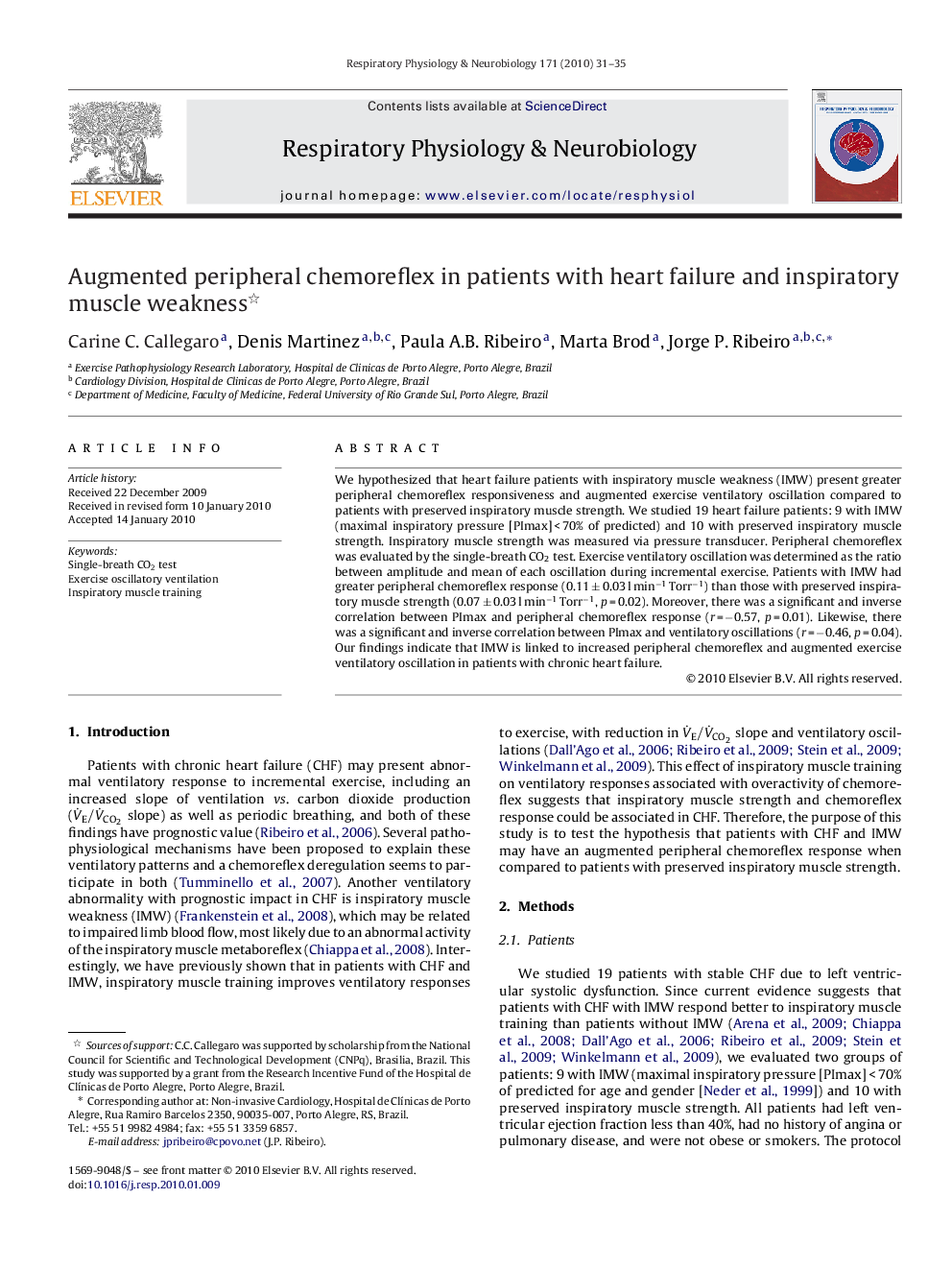| Article ID | Journal | Published Year | Pages | File Type |
|---|---|---|---|---|
| 2847708 | Respiratory Physiology & Neurobiology | 2010 | 5 Pages |
We hypothesized that heart failure patients with inspiratory muscle weakness (IMW) present greater peripheral chemoreflex responsiveness and augmented exercise ventilatory oscillation compared to patients with preserved inspiratory muscle strength. We studied 19 heart failure patients: 9 with IMW (maximal inspiratory pressure [PImax] < 70% of predicted) and 10 with preserved inspiratory muscle strength. Inspiratory muscle strength was measured via pressure transducer. Peripheral chemoreflex was evaluated by the single-breath CO2 test. Exercise ventilatory oscillation was determined as the ratio between amplitude and mean of each oscillation during incremental exercise. Patients with IMW had greater peripheral chemoreflex response (0.11 ± 0.03 l min−1 Torr−1) than those with preserved inspiratory muscle strength (0.07 ± 0.03 l min−1 Torr−1, p = 0.02). Moreover, there was a significant and inverse correlation between PImax and peripheral chemoreflex response (r = −0.57, p = 0.01). Likewise, there was a significant and inverse correlation between PImax and ventilatory oscillations (r = −0.46, p = 0.04). Our findings indicate that IMW is linked to increased peripheral chemoreflex and augmented exercise ventilatory oscillation in patients with chronic heart failure.
